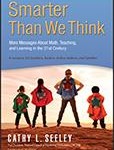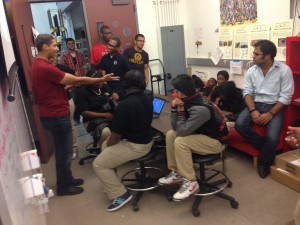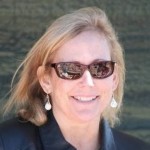Elizabeth Bastias loves to read stories to her second and third grade students, but frequently does not finish them. When they arrive at the climax of the story, she tells her students she is “tired” of reading and then closes the book, introducing them to the notion of a cliffhanger. Then she watches as the students eagerly read the book to find out how the story ends. She also observes the students searching hungrily for other books in her classroom library or at the school library to read. This is one of the many strategies she employs to create lovers of learning.
Listen to Ms. Bastias talk about hooking her bilingual students on reading books in English!
Ms. Bastias teaches mathematics and science to second- and third-grade students at Shadydale Elementary School in Houston ISD, but formerly part of North Forest ISD, a district that was closed in 2013 due to academic and financial troubles. I visited her bilingual classroom during summer school at the end of July. She participated in the 2014 RUSMP Summer Campus Program during June, and then volunteered to teach a mixed age classroom in July with students ranging from pre-Kindergarten through third grade.
When I observed her interacting with her students, two words came to mind, “master teacher”. Although I did not understand the language, I could comprehend how meaningful the teacher-student interactions were. Although the classroom was wonderfully busy with students engaged in differentiated activities, it was clear that Elizabeth had a command of the classroom. The children were all eager to show their creative work to her and receive authentic feedback from her. I witnessed love, encouragement, high expectations.
I urge you to watch yourself.
Principal of Shadydale Elementary School, Tammie Daily, knows how to keep a good teacher when she finds one. Ms. Daily first met Ms. Bastias when Daily was principal at Montgomery Elementary School. Then Daily was able to recruit Bastias to teach at Bonham Elementary School when she became principal there, and then recently at Shadydale. When I asked the enthusiastic school leader to choose five words to describe Ms. Bastias, Daily replied, “Inspiring, a risk-taker, life-long learner, creative, and a visionary.”
After visiting Ms. Bastias’s classroom, I agree with Ms. Daily. Take a look at how Ms. Bastias inspires her students to be artists, writers, and mathematicians.
For many folks, the bottom line in public education is how do students fare on state standardized exams. During the 2013-2014 school year, 15 out of 18 (83%) of Elizabeth’s bilingual third-grade students passed the math STAAR exam (administered in Spanish). This is in comparison to Shadydale campus results for third-grade students where 35 out of 123 students (28%) passed the math STAAR exam.
For further reference, in Houston ISD, 68% of bilingual third-grade students passed the math exam and 65% of all third-grade students passed the math exam.
Elizabeth believes passionately in teaching an integrated curriculum. She argues that “when you go outside, you don’t see that this part is math, this part is reading, this part is science. [You see that] everything is integrated. And that’s what I try to do in my classroom.” She also tells her students that “you don’t have to learn math and reading to pass the test. You are learning for yourself, for your life, for your future…not for passing the STARR.”
Watch as she explains her successful approach to teaching.
When interviewing Ms. Daily, the principal at Shadydale Elementary, I told her that it is a testament to her leadership that an excellent teacher followed her to two different schools. Daily replied that Bastias didn’t follow her, that Daily told Ms. Bastias, “Let’s go!” In other words, let us go together.
Amen.
Note: STAAR results for Grades 3-5 at Shadydale Elementary School are available here, STAAR results for Grades 3-8 for the Houston ISD are available here.











